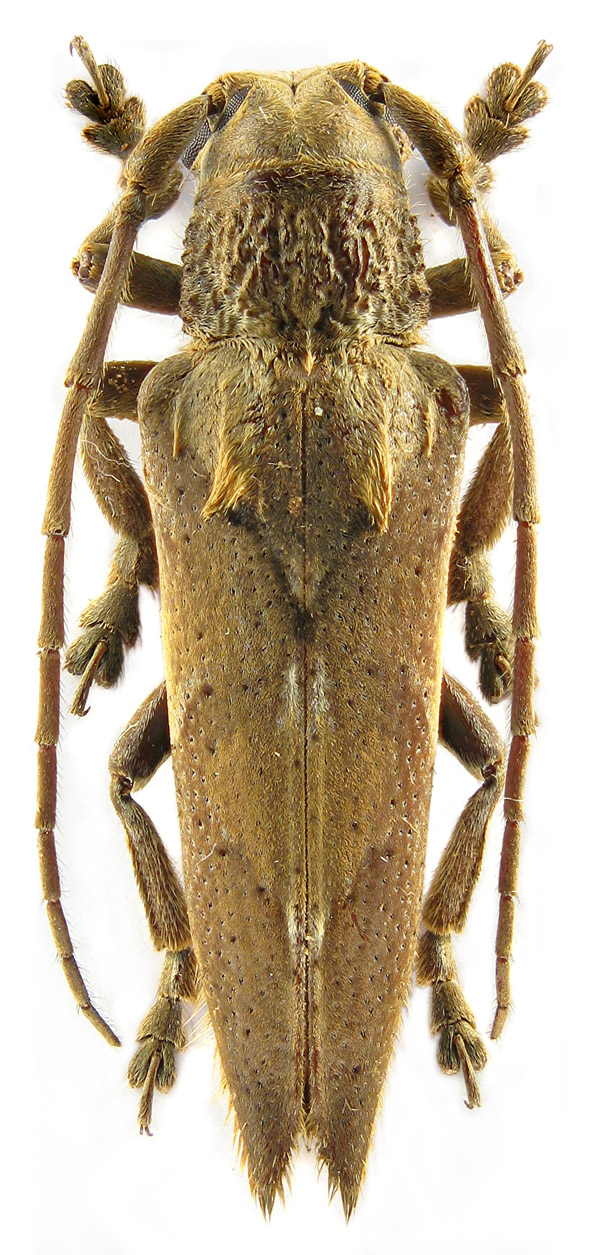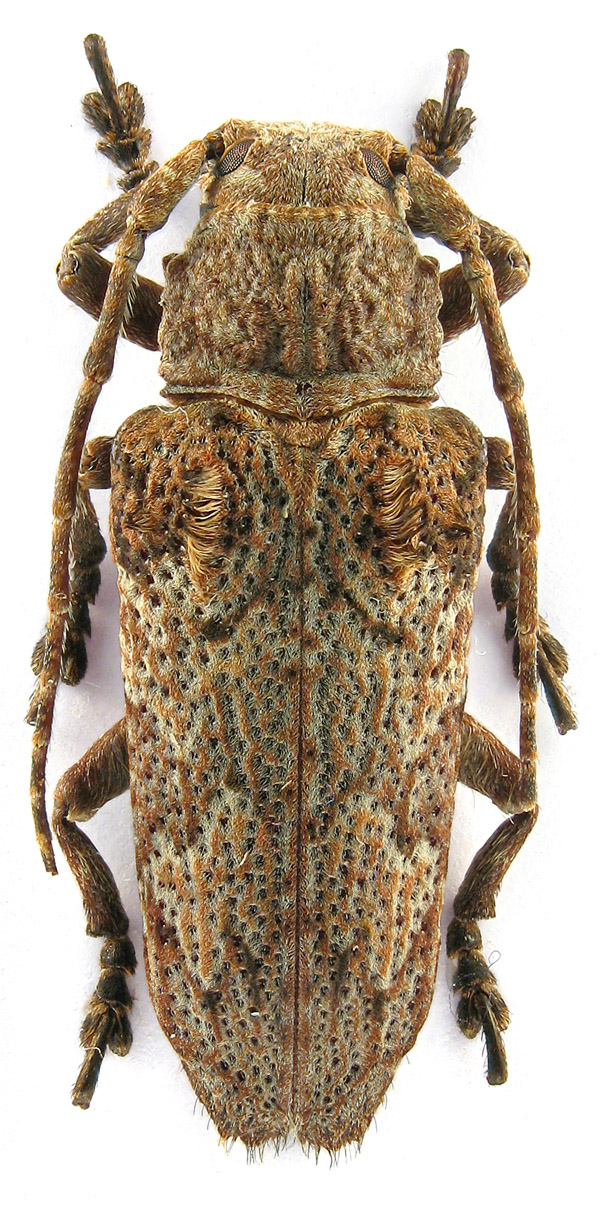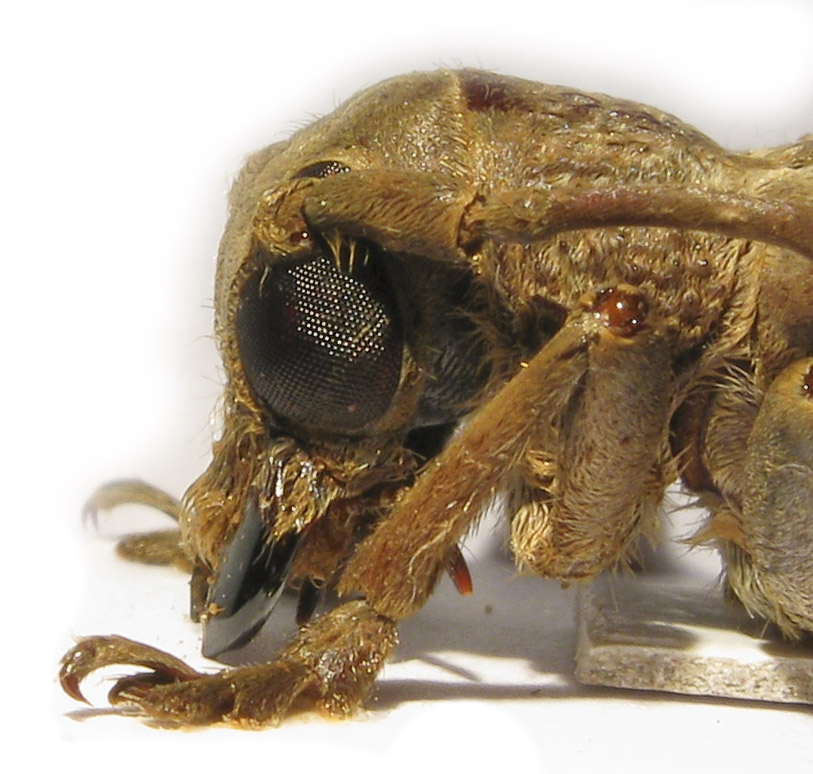| T O P I C R E V I E W |
| Max |
Posted - 20/03/2011 : 21:04:40

The next request to help with determination
Niphona gr. furcata (?)
S Vietnam, Bin`Fyok prov., ~23mm |
| 14 L A T E S T R E P L I E S (Newest First) |
| MONO |
Posted - 19/09/2016 : 07:38:36
I saw it in a book called "Beetles of Thailand", maybe it is wrong! Could you give me have a look at the HP?
Thanks, Xavier |
| Xavier |
Posted - 18/09/2016 : 17:22:53
No, it is not. Holotype picture shows a different species. |
| MONO |
Posted - 18/09/2016 : 17:01:28
Hello Francesco. The first one that I think is Niphona longesignata Pic, 1936 |
| Max |
Posted - 15/03/2016 : 21:58:18
I find out ¹2 It`s corresponded well to Type Ocheutes scopulifera Thomson, 1864, respectively - N. pannosa Pascoe, 1862 (many thanks to Gerard) It`s corresponded well to Type Ocheutes scopulifera Thomson, 1864, respectively - N. pannosa Pascoe, 1862 (many thanks to Gerard)
http://www.cerambycoidea.com/forum/topic.asp?TOPIC_ID=21107 |
| Max |
Posted - 07/08/2011 : 22:43:44
Ok. Thank you very much! |
| Francesco |
Posted - 07/08/2011 : 21:48:13
I agree, Max. I have not got Pic's original description of N. longesignata from Vietnam, but according to Breuning, it is "made" viceversa: the sutural angle is prolonged forming a lobe, while the lateral angle is evident.
The under eyes lobes should be as long as cheeks.
The pattern should have a post-humeral lateral white spot, an oval brown spot obliquely linking the basal tuft to the suture, and a brown longitudinal band posteriorly enlarged, covering the whole apical part... I will send you a scan of this page. |
| Max |
Posted - 07/08/2011 : 18:26:01
Dear Francesco,in a book "Beetles of Thailand" is only 2 species of Niphona, but their pictures match my two beetles.
First, (furcata-style) named longesignata (described from Vietnam), and the second - rondoni (described from Laos).
The book is not scientific, there are many obvious errors, but, nonetheless, legitimate doubts emerged.
Could you check out these two names to corresponding of my images?
I have no keys, no descriptions  Sorry Sorry |
| Francesco |
Posted - 23/03/2011 : 15:38:15
Thank you very much for your proposal, Max.
Actually, your pictures already have a nice definition and are in this Website...  |
| Max |
Posted - 23/03/2011 : 10:27:58
Perfectly, I am very grateful for the information and determination! If some of my photos are suitable for objectives of your site can use them. If the resolution of shots is not enough, I shall send a better version. |
| Francesco |
Posted - 23/03/2011 : 08:46:40

With these data (eyes 1/2 longer than cheeks) I reach Niphona tibialis Gahan from India, but I more think it is Niphona chapaensis (Pic, 1936) from Vietnam, which has eyes 2 times as long as cheeks.
Very difficult to interpret Breuning's key...
Both species are characterised by prothorax with antolateral tubercles, but the latter one has a lateral preapical bulge on the elytra as well. |
| Max |
Posted - 22/03/2011 : 22:17:29

Thank you very match, Francesco! It is very interesting to me. I more recently began to determine Cerambycidae from Southeast Asia and yet I do not know many simple things.
Here one more Niphona, from another group, (with the same label) look, please. At this exemplar length of a cheek from the mandibular basis up to the bottom edge of an eye - 2\3 lengths of the bottom lobe of an eye. |
| Francesco |
Posted - 22/03/2011 : 21:13:39
No, there are not many species (72), but Breuning's key is based on this character rather than on the shape of the elytral apex, which is very different in this group.
However, N. furcata has a nearly smooth pronotum, which does not correspond to this species. In addition the eyes are as long as cheeks...
The species with yellowish pubescence and so long eyes are N. princeps and N. batesi. Both have been described by Gahan (1894, p. 63) basing on specimens from Myanmar.
But I am not completely sure about their identity... |
| Max |
Posted - 22/03/2011 : 19:24:41

Thanks. Here, please. The cheeks practically is absent there.
Really as ("a la furcata" habitus) it is a lot of such species? |
| Francesco |
Posted - 22/03/2011 : 14:23:43
I agree, but it is not furcata certainly.
I'd need a lateral view of the head since Breuning's key is based on the proportion eyes/cheeks. |


